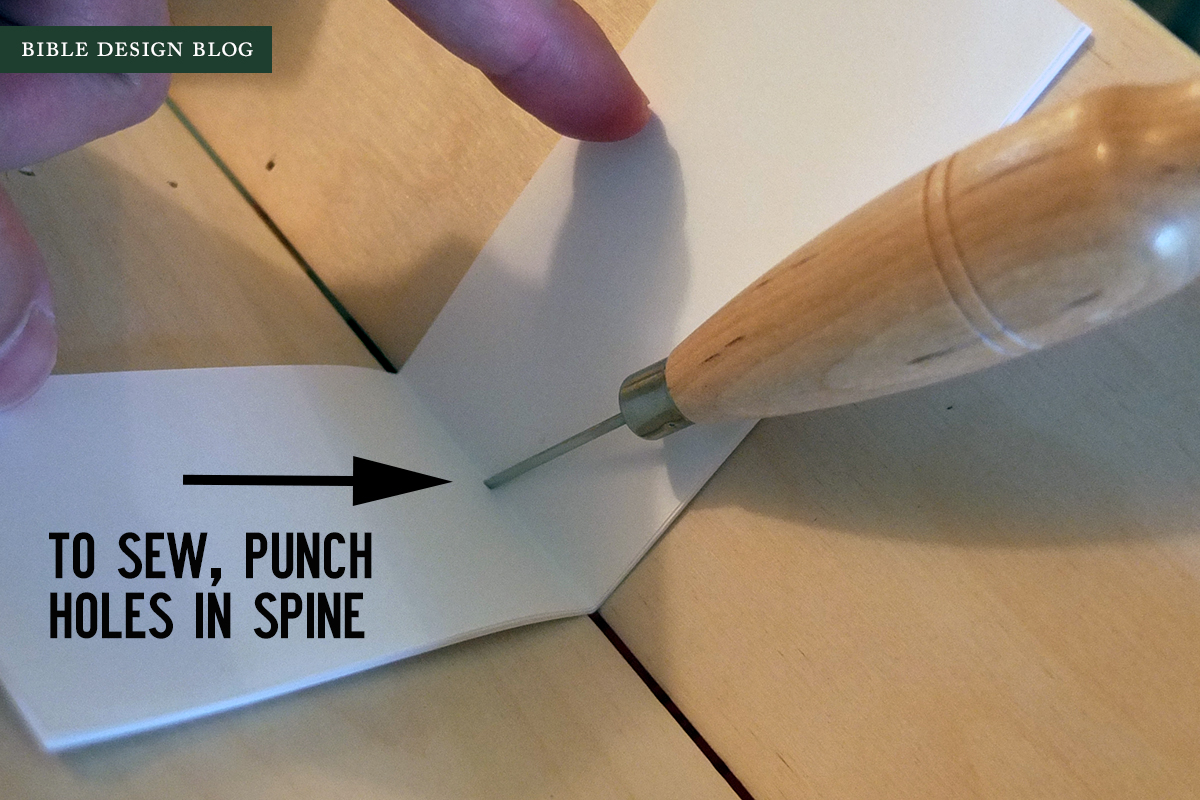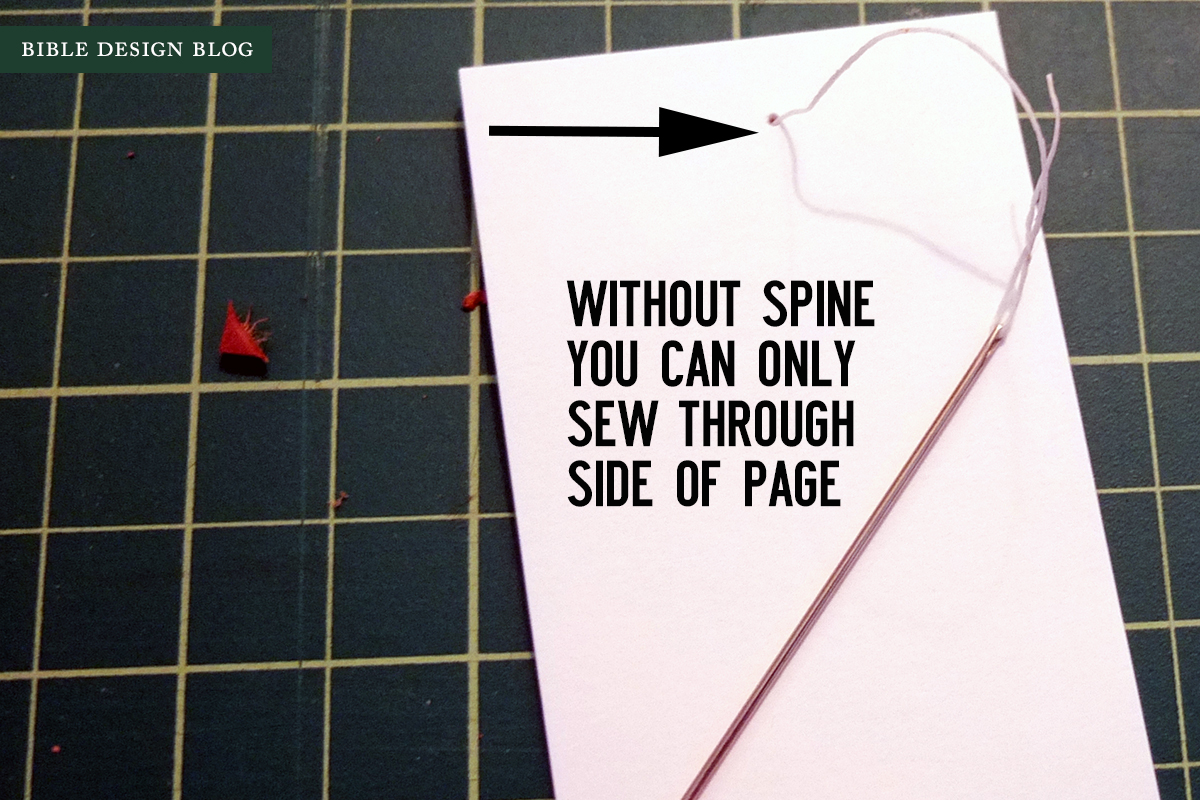Can a Glued Binding Be Turned Into a Sewn Binding?
This week a reader e-mailed me to ask whether his Bible, which is only published in a glued volume, could be be turned into a sewn binding. His complain about the glued binding was that it wouldn't open flat, so he was hoping the problem could be solved by having the pages sewn together. This question comes up from time to time, and I'm afraid the answer is no. You cannot sew the pages of a glued binding together. (Well, you can, but as you'll see, you won't be happy with the result.) A sewn binding is made up of a series of folded booklets called "signatures." Here's an example:
This is a book block I printed, folded, and sewed together by hand. As you can see, the spine isn't lined up to well, which is why I had it handy in the workshop: this example was a reject from a project I worked on a couple of years ago. If you count the individual signatures, you'll see there are twelve. Every book you own which happens to Smyth-sewn is made the same way -- except that yours are neater, because they weren't made by my unskilled hand.
Here's what an individual signature looks like:
It's pretty simple, right? You can create one yourself by take a few sheets of copy paper and folding them in half. Each sheet now equals four pages: the outside front, two inside pages, and an outside rear. Again, if you pulled apart a sewn book, you would find that the basic building block looks more or less like this. In order to sew the signatures together, you punch holes in the spine, like so:
This sample is a piece of scrap in the workshop, so I only punched one hole through the spine. Depending on the sewing pattern, a real signature might have three holes, six holes, or whatever. The threaded needle will run back and forth, attaching the loose sheets together, and it will also connect this signature to the next.
The reason you can't convert a glued Bible into a sewn one is that, when a glued Bible is prepped for binding, the spine is sliced off. After all, if you applied glue to the spines as-is, the inner sheets of the signature would simply fall out of the book. To get good adherence on every page, you need to be able to apply glue to each one. So a signature ready for glue might look something like this:
As you can see, there's nothing to push a needle through anymore, which means remedial sewing isn't an option. "Wait a second, Mark! I asked a bookbinder if my glued binding could be sewn, and he said yes." Technically, he's right. You could do something like this:
The thing is, since there's no spine to run the thread through, he can only sewn the pages by poking through the sides, the way a stapler does. There are a couple of problems with this solution. First, the book wasn't designed with this use in mind, so it probably won't have the generous inner margins necessary to sewn the pages without obscuring the printed text. Second, the book won't open flat any more than a stapled book would. If you ask me, it isn't worth it, which is why a lot of bookbinders, while acknowledging the job can be done, won't do it.
Some publishers offer nothing but glued bindings. My advice? Don't buy their products. Slowly but surely, the Bible publishing industry is waking up to the fact that sewn bindings are a necessity.






